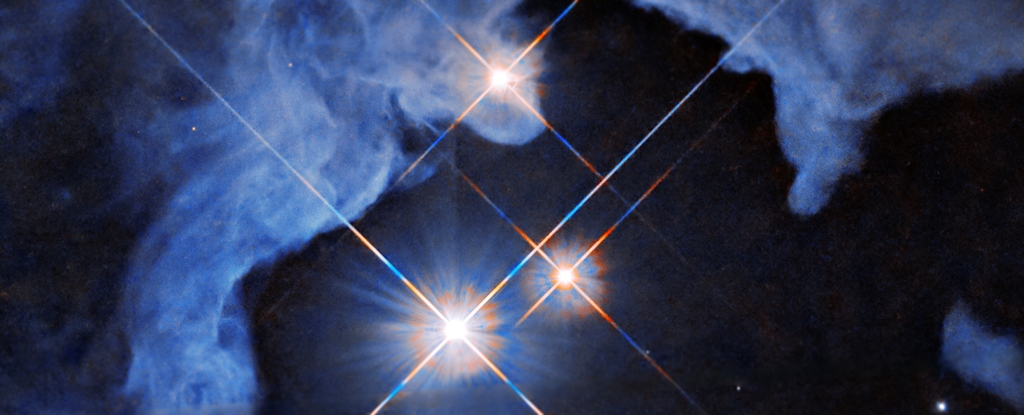In a world that seems to be switching focus from the Hubble Space Telescope to the James Webb Space Telescope, Hubble still reminds us it’s there.
Another amazing image has been released that shows the triple-star system HP Tau, HP Tau G2, and HP Tau G3.
The stars in this wonderful system are young, HP Tau for example is so young that it hasn’t started to fuse hydrogen yet and is only 10 million years old!
Hubble was launched in 1990 and since then, has revolutionised our understanding of the Universe. It orbits Earth at an altitude of around 547 kilometres and from that position has provided us stunning views of objects across the cosmos.
It is about the size of a classic British double decker bus and at its core, a 2.4m mirror. The mirror collects incoming light from distant objects before directing it to one of a number of instruments that record and analyse it.
The image recently released shows a wonderful example of a reflection nebula 550 light-years away in Taurus. These particular types of nebula are made up of interstellar dust that reflect light from nearby stars, unlike emission nebula which glow in their own right.
They have a characteristic blue hue to them due to the reflective properties of the dust. Looking at the image you can easily imagine a hollowed out cavity in the nebula that has been carved by the young stars.
The triple stars at the heart of the system, HP Tau, HP Tau G2 and HP Tau G3 are young hot stars. HP Tau is a type of variable star known as a T Tau star. They are a type of star that are less than 10 million years old and named after the first start of its type to be discovered in Taurus.
Identification is usually achieved by studies of their optical variability and strong lines in their spectra from the chromosphere. Given their young age, they are generally found still being surrounded by the cloud of gas and dust they have formed out of.
The amount of light emitted by HP Tau varies with time, however this particular type of star tends to have regular and sometimes random fluctuations.
The jury is still out on the random variations but it may be the young nature of the stars leads to slightly chaotic processes as the stars begin to settle down. Perhaps material from an accretion disk still in the process of collapsing may dump material onto the star causing it to flare.
Take a good look at the image though and make sure to study the stunning patterns of the nebulosity. Remember the light that left this object has travelled for 550 years before entering the optics of the Hubble Space Telescope.
When Hubble turned its attention to HP Tau it did so as part of an investigation into protoplanetary disks. These disks are seen in many young hot stars and are believed to be the progenitors to planetary systems around stars.
This article was originally published by Universe Today. Read the original article.





